Unpacking the Year 10 and now Year 11 English curriculum in Australia is challenging and something I wish I’d done earlier in my career. Yes, we must know our primary curriculum and early secondary (to a point) but pulling apart these higher levels is interesting.
Angela Stockman has given me some excellent advice and even though I’ve been unpacking curriculum for many years, these standards are complex. Her advice is breaking the standards into learning targets that can be taught in one lesson and can be understood by teacher and student. This is essential to develop Learner Agency. Each standard has multiple targets and as my time with Mark is short, I need to maximise learning.
 Whilst putting this continuum together, I’ve been working with Mark on punctuation. Steve Peha recommended we do the Punctuation Inquiry activity in Be a Better Writer.
Whilst putting this continuum together, I’ve been working with Mark on punctuation. Steve Peha recommended we do the Punctuation Inquiry activity in Be a Better Writer.
‘Punctuation Inquiry helps you learn how marks are used. Once you’ve read through a passage and figured out the punctuation, figure out why it’s there.’ Steve Peha
Steve uses a simple chart with three headings:
Example- Why It’s Used- Questions & Comments.
Mark and I focussed on capitalisation. We read through the example and discussed the use of capitals. He describes looking closely at a text as close reading. This is a quick activity and can be done daily on 75-100 words a day. What an excellent launch activity.
Next we looked at Punctuation Reading. The background Steve gives for this is that ‘most of us aren’t fully aware of punctuation when we read.’
We read the passage in Be a Better Writer and then we read the passage again with the punctuation noted in words e.g. new paragraph, indent, capital on a dark capital December night in 1776 comma…
This short paragraph contained 48 marks of punctuation, ten different types of punctuation and fifteen uses of punctuation which are explained in the book.
Steve states that this activity helps you ‘learn the names of the marks’ and ‘helps you develop a sense for how they’re used in published writing.’ Another great launch activity for the classroom.
Mark is reading Triage by Scott Anderson for English. He decided that writing a chapter summary would help him to analyse the text. Summarising the first chapter was excellent, because the first chapter sets the scene, introduces the characters and emotions and plot.
Mark wrote a well thought out paragraph. It was clearly presented, double line spaced and did not require rewriting! The punctuation was in place, placed for meaning and his spelling has greatly improved. I’ve called this his ‘awareness phase’.
I also love the dedication page in Be a Better Writer.
‘Use it to talk to your students about what matters most in writing. Use it to show them the writer you are so they’ll have a model for the writers they’ll become.’ Steve Peha
We break standards into learning targets that are kid friendly and teachable in a single lesson. They use kid language, and we put them on the board or on our anchor charts.We break standards into learning targets that are kid friendly and teachable in a single lesson. They use kid language, and we put them on the board or on our anchor charts.
Each standard has multiple targets, typically. We share them with kids.
It makes things far more meaningful.
Cheers Nina
A Message from Steve Peha

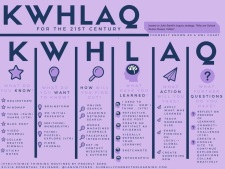 I’ve been asked to explain how I review a piece of writing with a student. This is an interesting question. When conferencing a piece of writing, I’m not giving the writing a mark against standards. I’m looking for how to help the student be a better writer. I like to call it taking a global close look at the writing with the student. There is a risk of becoming too micro driven when teaching writing. This is one reason why I love Steve Peha’s book Be a Better Writer because Steve talks about the things which matter most.
I’ve been asked to explain how I review a piece of writing with a student. This is an interesting question. When conferencing a piece of writing, I’m not giving the writing a mark against standards. I’m looking for how to help the student be a better writer. I like to call it taking a global close look at the writing with the student. There is a risk of becoming too micro driven when teaching writing. This is one reason why I love Steve Peha’s book Be a Better Writer because Steve talks about the things which matter most.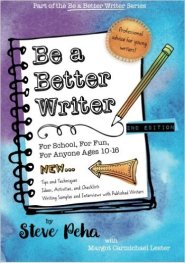 Secondly, when a student gives me a piece of writing to review the first thing I like the student to do is read their writing to me. This often prompts the student to make initial corrections and pose questions about their own writing. This is where I start asking the student simple questions. Why did you write about…? What structure did you use?
Secondly, when a student gives me a piece of writing to review the first thing I like the student to do is read their writing to me. This often prompts the student to make initial corrections and pose questions about their own writing. This is where I start asking the student simple questions. Why did you write about…? What structure did you use?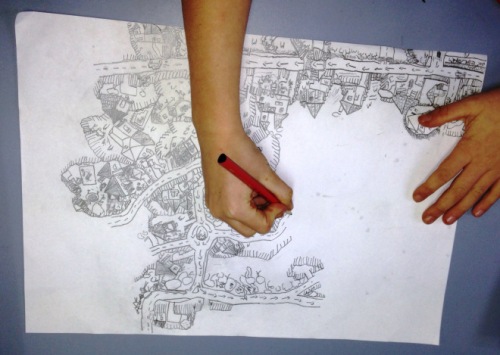
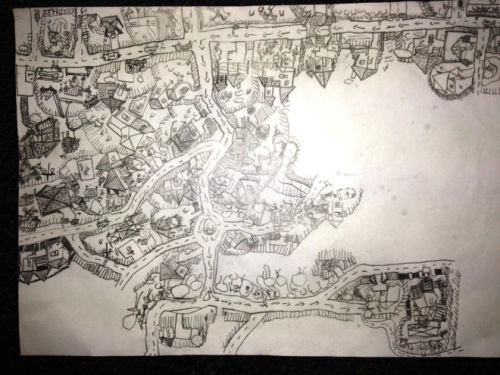
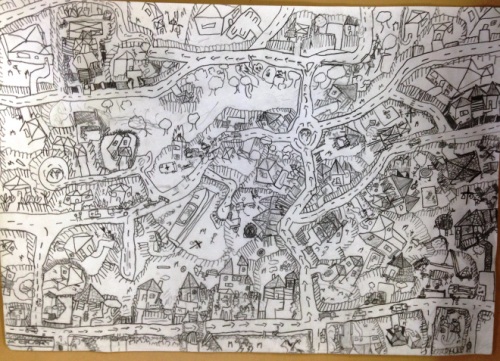
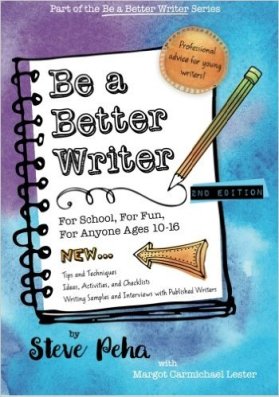
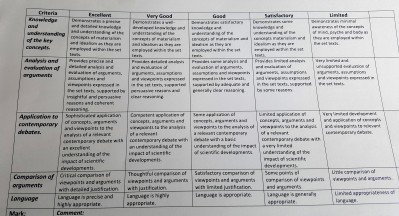 Mark and I reviewed the rubric for a Philosophy essay, particularly the language section. What does ‘Language is appropriate’ mean?
Mark and I reviewed the rubric for a Philosophy essay, particularly the language section. What does ‘Language is appropriate’ mean?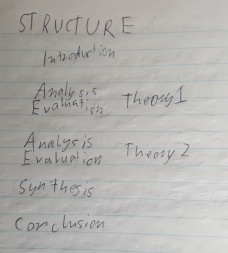 Using Steve’s What-Why-How? strategy has helped Mark to look closely at the question and answer the actual question. When students don’t read the question carefully and continue to write an essay on a different topic, there is a problem. The What-Why-How? helps to eliminate this.
Using Steve’s What-Why-How? strategy has helped Mark to look closely at the question and answer the actual question. When students don’t read the question carefully and continue to write an essay on a different topic, there is a problem. The What-Why-How? helps to eliminate this.

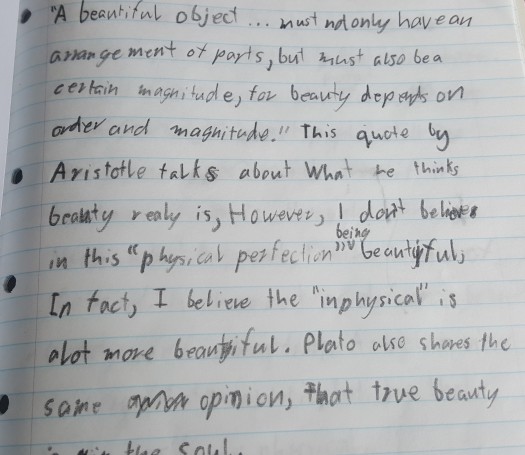
 Mark’s focus for our session was preparing for his Year 10 English test. He knew this test would entail writing an essay. Mark would be writing an essay on Scott Anderson’s Triage.
Mark’s focus for our session was preparing for his Year 10 English test. He knew this test would entail writing an essay. Mark would be writing an essay on Scott Anderson’s Triage. 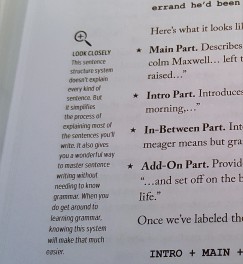 We have also been reviewing sentence structure. Chapter Seven focuses on Better Sentences and commences with the 10 things you need to know about sentences.
We have also been reviewing sentence structure. Chapter Seven focuses on Better Sentences and commences with the 10 things you need to know about sentences. 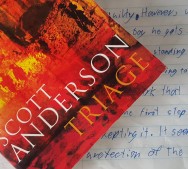
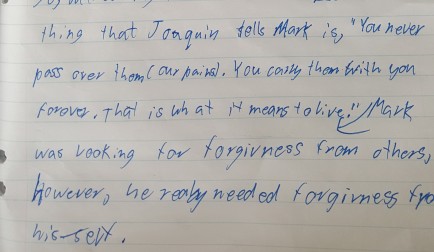
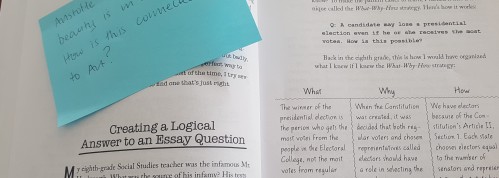
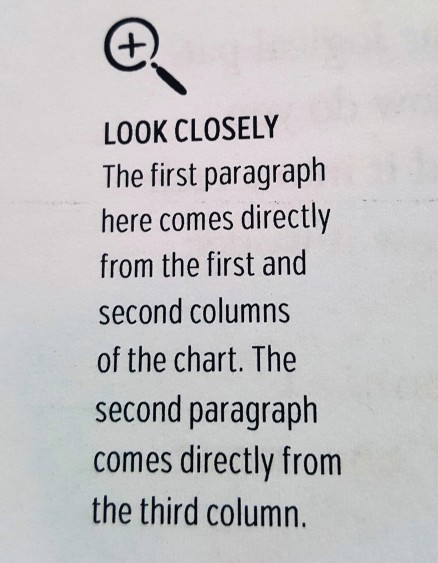
 Whilst putting this continuum together, I’ve been working with Mark on punctuation.
Whilst putting this continuum together, I’ve been working with Mark on punctuation. 